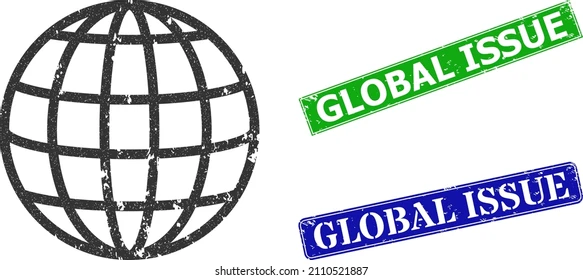ARTICLE AD
 Skytruth 30x30 Progress Tracker, Multi-view. Credit: SkytruthOpinion by John Amos (santa fe, new mexico usa)Friday, October 18, 2024Inter Press Service
Skytruth 30x30 Progress Tracker, Multi-view. Credit: SkytruthOpinion by John Amos (santa fe, new mexico usa)Friday, October 18, 2024Inter Press ServiceSANTA FE, New Mexico USA, Oct 18 (IPS) - Two years ago world leaders from nearly 200 countries made a landmark commitment to protect and conserve at least 30% of the planet's land, ocean, and freshwater by 2030 - an initiative known as "30x30".
From the lush rainforests of the Amazon to the azure waters of the Great Barrier Reef, this ambitious goal aims to safeguard our planet's tremendous biodiversity, mitigate climate change, and secure vital ecosystems.
This will be the primary focus of the UN Biodiversity Conference (COP 16) starting next week in Cali Colombia. (October 21-November 1)
As we embark on this crucial mission, we must recognize that the success of 30x30 hinges not just on reaching a numerical target, but on how we get there. Transparency of information and inclusion of impacted communities must be at the forefront of this global conservation effort.
Historically, conservation initiatives have been top-down, driven by governments and international organizations with limited input from local communities. This approach has sometimes led to the displacement of Indigenous peoples, the disruption of traditional livelihoods, and the creation of protected areas that exist on maps but offer little real protection on the ground.
Now, we must shift this conservation paradigm to prioritize a more equitable and effective approach. One way this can happen is by making 30x30 data free, easy to understand, and available to all.
How well is the world doing on 30x30? How is one country participating compared to its neighbor? What are the promises being made by governments versus the reality on the ground?
These are some of the questions we're trying to answer with the 30x30 Progress Tracker, a first-of-its-kind open-source platform that captures key 30x30 data all in one place, makes it user-friendly, and enables anyone to get involved.
Now government agencies, NGOs, journalists, frontline environmental defenders, and the concerned public can visualize progress towards the 30x30 goal on land and at sea, spanning coral reefs to forests, grasslands, wetlands, and other vital ecosystems.
This free tool allows conservation experts and non-experts alike to interact with existing protected areas and draw simple maps of potential new conservation zones. Although there are more sophisticated mapping and analysis tools available for designing protected areas, by exploring data on key habitats, species distributions, and climate resilience factors, users can quickly sketch their own lightweight scenarios showing how biodiversity protection could move forward.
The Tracker will add more information as it becomes available, including the land rights of Indigenous Peoples and local communities, recognizing the critical role they have played throughout the millennia in biodiversity conservation.
When information about conservation progress and challenges is openly available, it enables civil society, researchers, and the public to hold governments and organizations accountable for their commitments. This scrutiny can help ensure that protected areas are not just designated, but effectively managed and enforced.
Transparency also enables more informed decision-making. When data on biodiversity, endangered species, and human use of natural resources is openly available, it allows for better-targeted and more effective conservation efforts.
It can help identify priority areas for protection, potential conflicts with human activities, and opportunities for sustainable resource use. And it can foster trust. When local communities can access information about conservation plans that affect their lands and waters, it can facilitate more productive dialogues between conservation planners and local stakeholders.
Open-source data can play a role in this transformation, but it is just one piece of the puzzle. The real measure of success for 30x30 will not be in the numbers alone, but in how well we've engaged and empowered the diverse stakeholders whose lives and livelihoods are intertwined with the lands and waters we seek to protect.
Measuring success is also not just about quantity - we need to scrutinize the quality of protection. We have data for the ocean and are collecting data for the land on both protection levels and management effectiveness so that designated protected areas can deliver real conservation outcomes.
As we approach 2030 the pace of conservation efforts must accelerate dramatically. Globally, only about 17% of land and 8% of ocean areas are now under some form of protection. To reach the 30x30 goal, we need to protect and conserve an additional area roughly the size of Africa in just six years.
This herculean task requires unprecedented cooperation, innovation, and commitment from governments, NGOs, and communities worldwide.
With the democratization of 30x30 data, local communities, Indigenous groups, and grassroots organizations can access the same information as policymakers, empowering them to advocate for the protection of their lands and waters effectively.
Together we can galvanize action, inform policy, and hold decision-makers accountable, transforming the abstract goal of 30x30 into a tangible, achievable target that we can all work towards.
John Amos is CEO, SkyTruth, based in Shepherdstown, West Virgnia, and described as a conservation technology nonprofit that utilizes satellite imagery, machine learning, and big data to make hidden environmental problems visible, measurable, and actionable. SkyTruth envisions a world where everyone enjoys a healthy environment and sustainable livelihood because transparency is the norm: polluters know they will be seen and caught, industries have cleaned up their practices, and governments are vigorously enforcing environmental protection.
Learn more at https://skytruth.org/.
IPS UN Bureau
© Inter Press Service (2024) — All Rights ReservedOriginal source: Inter Press Service

 2 months ago
21
2 months ago
21 

